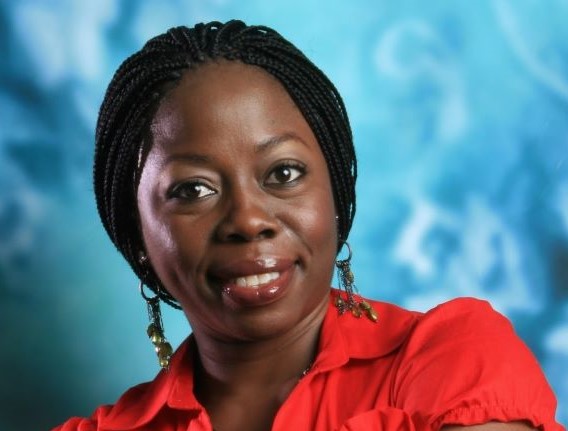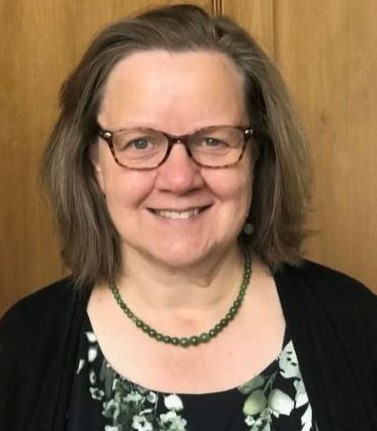Nkem Akinsoto & Vicky Fang
Welcome to Collective Conversations, a series of discussions aimed at highlighting people and groups working to improve health through better health care systems.
In this conversation you'll hear from Nkem Akinsoto and Dr. Vicky Fang.
The work and community partnerships they've fostered are exemplary not only for improving breast cancer screening for women who identify as Black or African American, but also in providing actionable insights on how to engage with community members we wish to serve.
Joy Lee: To start us off, would you both share about why you are doing this work focused on breast cancer screening equity?
Dr. Vicky Fang: One of my major responsibilities is population health and bringing all of our communities that we treat at UW Medicine Primary Care the same level of care. We know that there is inequity in how cancer screening in general is delivered in our communities and in the mortality rates for cancer in our communities. And so, this project around improving breast cancer screening equity for women who identify as Black or African American is right at the heart of the work that I’ve taken on.
We know that breast cancer is a leading cause of death in women between ages 45 and 84. We know that 1 out of 8 women will get breast cancer. And we know that the mortality rates for Black women is 40% higher than for White women for breast cancer. So, this particular project is a high-impact project for us to be doing for population health.
Nkem Akinsoto: My name is Nkem Akinsoto. I am the assistant director for population health with UW Medicine Primary Care. Coming into this role, I was looking at data around this at some point a few years ago. And we realized there was a gap between the uptake of mammography (that is mammograms for breast cancer screening) among various populations, and especially the Black and African American women within our UW Medicine entities. A lot of the outreach that I have worked on and planned have included some element of trying to level that playing field and ensure that Black and African American women have more outreach to them and a way to come into this.
Personally, I identify as Black, African American. I am an immigrant to the United States. So, I find that even within my own circle of friends, as I turned 40, I began to have that conversation with my provider. Other friends of mine around the same age who weren’t as interested or who weren’t being encouraged by their providers did not know that they could, if they wanted to, get screened for breast cancer and have it covered as part of their preventive care. So, for me, I was speaking personally to friends, but also it began to motivate me to get involved in other projects at work that were geared towards putting forward the equity perspective when doing this kind of work that already aligned with my passion.
VF: Nkem makes a really interesting point here about women who identify as Black in their 40s because our US Preventative Health Services Task Force guidelines for when to screen women start at age 50. But we know that for Black women, the breast cancer curve has shifted to the younger age groups. So, the peak age is younger and there’s many more women in their 40s who are being impacted than for the non-Black population. So, it’s particularly important for us to be thinking about not only how to outreach to patients, but which patients should we be outreaching to, and how do we train our provider group ourselves to address these issues.
JL: My understanding is that you’re currently doing a pilot that aims to work directly with Black women to help design a better outreach for breast cancer screening at UW Medicine. Can you tell us more about what the pilot project entails and what activities have occurred so far?
VF: There are several threads to the work that we’ve been doing and small grants with focus projects have actually been very helpful for us in making progress in our goal to improve breast cancer screening equity. The University of Washington launched a series of small micro grants called The Patients Are First innovation pilots, and our group was one of the first innovation pilots to be awarded and it was for the purpose of designing a web-based tool to outreach to Black and African American women for breast cancer screening.
NA: In the time since then, there has been a lot of activity. We set up multidisciplinary, cross entity, cross organization workgroup on breast cancer screening equity. And we meet monthly to discuss some of these projects.
A project that also took place in the interim or interval since was one that was funded or supported by a grant from the American Cancer Society, and it included outreach to women in various languages. We printed communication materials in Somali, Amharic, and Tigrinya. These were the major languages spoken amongst our Black and African American populations; in addition to Spanish and English of course. So, those materials were printed and placed in patient facing areas in clinics, 15 clinics and counting. We also did phone outreach to patients in this population to encourage them to schedule their mammograms and to find out barriers that are experienced, if any.
So far, that has yielded a lot of insight into potential tactics we can use going forward to better engage this population. We are also hoping to do some more work around this population and others that are still having gaps or disparities in their breast screening outcomes.
VF: One of the things we’ve been able to do with UW Medicine is to create a public service announcement starring Bridgette Hempstead from Cierra Sisters to reach the Black and African American community to talk about the importance of breast cancer screening. We made both a shorter version and a longer version of this public service announcement.
NA: I was so excited when I heard it on the radio. I’ve seen the videos and the audio at work. But one day, I was driving and it came on The Jet [Seattle] radio. Just unexpectedly, I heard Bridgette’s voice. And I was so excited, I was telling the person I was with in my car, I said “We did that! My team…we worked on that!” So, I really appreciate that PSA and how widely it has gone out into the community. It was a highlight for me.
JL: We’ll be happy to share that as a resource when we publish this audio. Are there next phases already planned building off of what you’ve gleaned from in this last year?
NA: I would say it depends. There’s always a plan. One of the things that we are hoping to get done is place the screening, that’s the mammograms – more mammograms – in areas that are more accessible to the underserved populations, including the Black and African American population. We also recently got approved of a dedicated FTE, that’s the resource person for this population, in general for breast cancer screening. But I hope potentially, from an equity perspective, to improve breast cancer screening across various subpopulations.
VF: There is also work going forward to continue the work started with the patients in our first innovation pilot to further develop the web-based tool to outreach to women. So, they have starter grant to develop a prototype for it was very important in our being able to then continue that work later on.
JL: What greater change do you want to see come from this project when it’s completed? (e.g. greater adoption of screening tool(s), more community engagement, and/or more cross collaboration in other health systems with community partners, etc.)
VF: Well, we very much want to see the screening rates for breast cancer for Black women to be the same as the screening rates for non-Black women. And furthermore, we’d like to see that we captured breast cancers earlier for Black women and have actually saved lives. So, this is not just about statistics. There are actual lives at stake here. And we very much want to find those women and help them.
NA: I agree. These are actual women. These are our sisters, our mothers, our aunts. I actually had a cousin’s wife recently reveal to me that she was diagnosed early enough. She’s actually in her early 60s, so it wasn’t too early. But she was lucky that through screening, she was able to get diagnosed with breast cancer. She quickly got treatment and all the works, but she’s cancer free now. So, for me, that’s the greater change. More awareness within the Black and African American communities and populations about earlier screening for breast cancer and regular check-ups. And then in the work that I do, I think the change that I would like to see within UW Medicine, is more collaboration with community partners to increase that awareness.
I would like to collaborate more with community-based organizations, have more, we call them health fairs, so ways of engaging the community. I would like to have more of the voices of the patients, especially in this population, in our decision-making and planning. And I’m very happy Dr. Fang recently invited a community partner to participate in our workgroups. Through that, we’ve been able to set up a good beginning to this change that I hope to see more of in the future.
VF: Our hope is that this will go far beyond just breast cancer screening because once we make these connections into the community, we can extend education around colon cancer screening, we can find out what the community needs and barriers are for getting preventive care and other care.
One of the most productive relationships we’ve had in this project is our relationship with Bridgette Hempstead of Cierra Sisters. She is actually the person who did all of the interviews for our patients, our first innovation pilot grant. So, she is a member of the community who is a breast cancer survivor. And I think one of the important things that we did is that we engaged her and we valued her time, so the grant was able to pay her for her time to do these interviews. So, we didn’t have to just ask for the community to volunteer their time. And I think that’s actually important to get buy in and for this work – we should engage with the community in a very positive way.
JL: I think it’s important that you’ve gone into the community, engaging with women who identify as Black to hear about their experiences trying to seek breast cancer screening. Can you tell us more about the preparation it took to do this respectfully and appropriately? Also, are there any lessons you may have learned along the way that you want others to be aware of who are interested in doing something similar; engaging community members to better design services that meet their needs?
NA: Yeah, I think Dr. Fang already set the scene. Finding people who identify in the community that you want to engage or you seek to plan with, or prefer services or products is very important. I think working with Bridgette was kind of the very first in identifying Bridgette as a voice in the community already. Bridgette, as a cancer survivor, has done tons of work over decades in raising awareness for breast cancer screening. So, identifying her voice and amplifying it was very, very critical to the success of our initial Patients Are First grant project. With her platform, she was able to bring on other women who identified as Black. And we also leveraged the UW mailing list for staff and employees across the university who also identified the same way. So, we were able to hear directly from the women impacted in our local area. Even on the workgroup we do have at least a couple of women who identify as Black. Our Chief Health Equity Officer is a member of this committee and identify as Black as well. She is a breast cancer survivor also, so, it was great to have her there.
So, I think if I have to say one lesson that I learned was just being able to identify people who are already working in the communities and then helping to raise their platforms and amplify their voice would be very respectful. And like Dr. Fang mentioned, rewarding or compensating their time, because as much as they are passionate about this and may have been doing the work as a nonprofit endeavor, I think it behooves us as organizations and corporate entities to reward their time and compensate their time and IP for contributing to efforts that we are rolling out as well.
VF: The one thing I would add is that it is crucial to have community representation, not only in the interviewing phase, but in every phase of development of whatever you are developing. So, we were in the process of developing this prototype for a web-based tool. After the interviews and our scoring of the interviews, and gathering that data, we started to put together what we thought would be a good prototype. But we then brought it back to a subset of those same women and said,” “Did we get it right? Is this correct?” And they were great. They were much better at seeing the flaws in what we had put together and in tweaking it, because they were going to be the users. So, I think that was a good learning for us – that at every stage, they need to be there.
JL: Before we close out, is there anything else that either of you would like to add to our conversation today?
NA: I just want to say that sometimes representation is underestimated. And so, anyone working in this field should always have that front of mind. Representation matters. So, now one of the things that we watch out for going forward is the materials that we are creating or developing for general patient engagement – do they represent the totality of our patients, rather than being one solid block all the time? We want to see some people of color, we want to see other colors and all the people that we serve in the materials that we create, not just breast cancer screening, but across the board.
VF: I’d just like to add I’m very grateful to you for advertising this work and for publicizing it because I think that is part of how we actually reach our goal, is by reaching a broad audience, not only the community that we are trying to reach, but also providers who are delivering this care, and the entire healthcare system. So, I appreciate you taking the time to speak with us.
JL: I just have to say thank you right back to you both for the work so that we can highlight it. It’s wonderful to have you both here. We’re lucky to have you at the UW for sure. Well, Nkem Akinsoto and Dr. Vicky Fang, thank you so much for your time.





